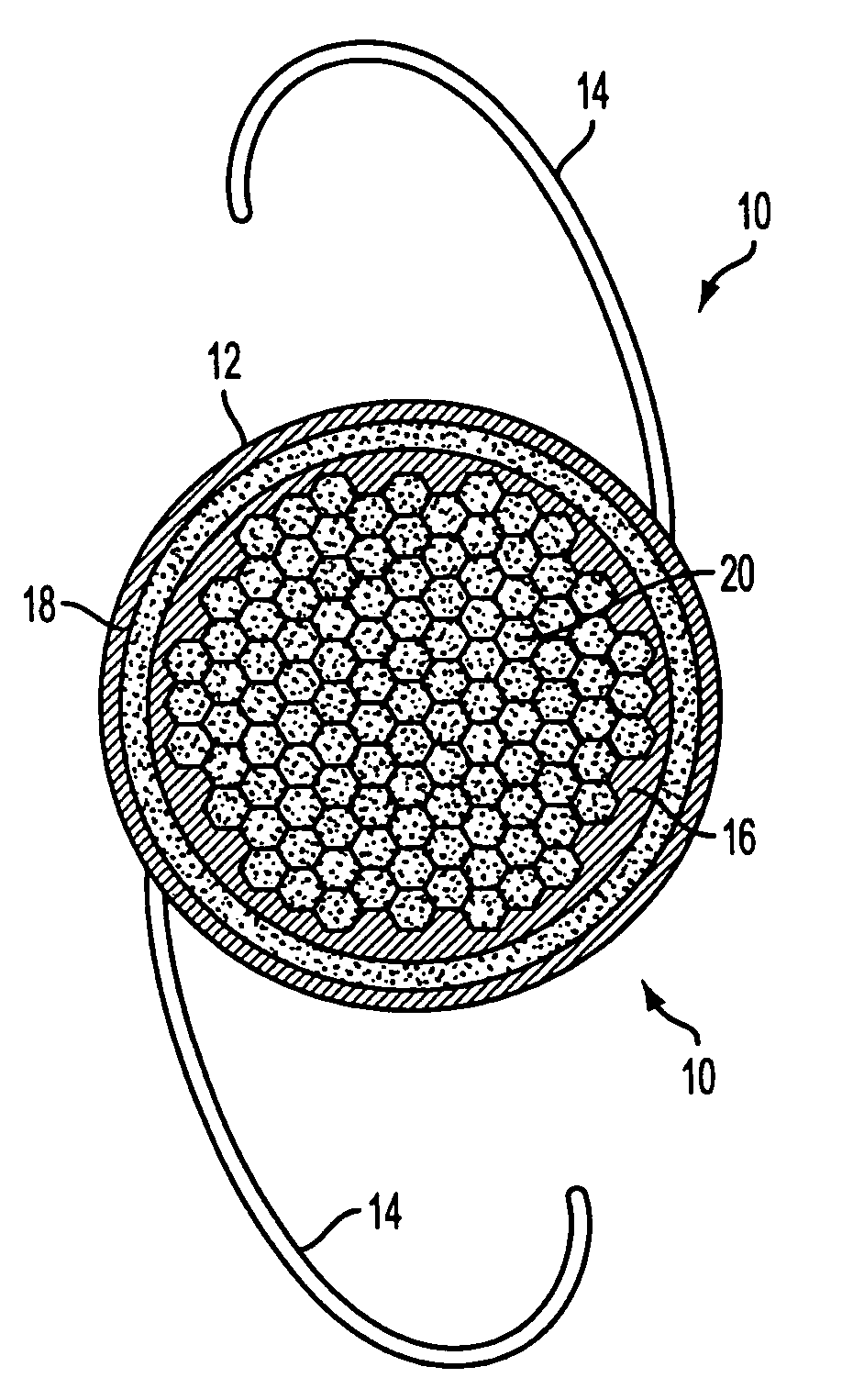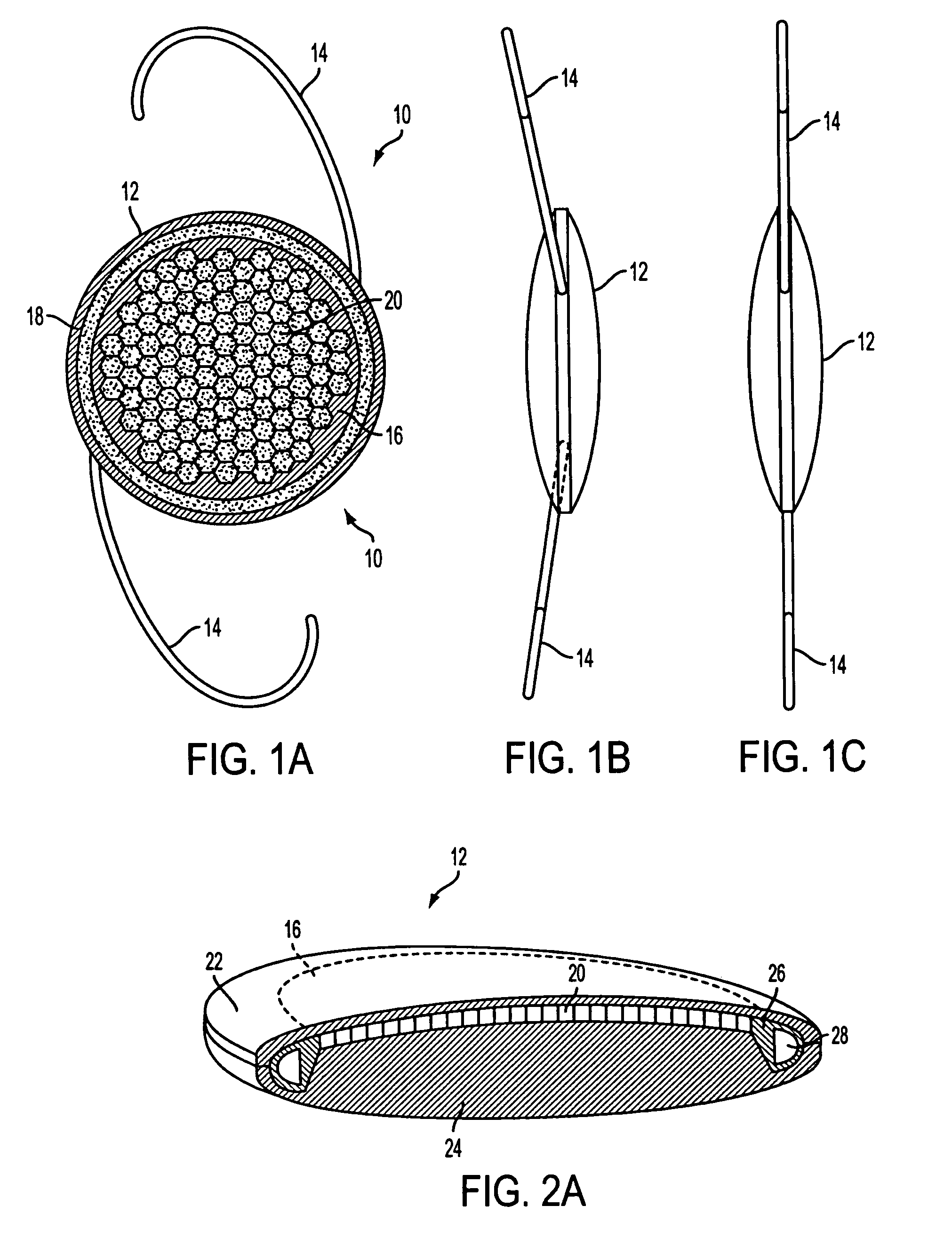Lens system and method for power adjustment
a technology of power adjustment and lens system, applied in the field of lenses, can solve the problems of large iol patient error, and inability to predict refractive error,
- Summary
- Abstract
- Description
- Claims
- Application Information
AI Technical Summary
Benefits of technology
Problems solved by technology
Method used
Image
Examples
Embodiment Construction
[0037]The present invention is directed to an in-situ adjustable lens system, with particular applicability in the fields of implantable intraocular lenses (“IOLs”) and custom contact lenses. As will be described below, the system of the invention also may be utilized to adjust the power of other types of lenses used for vision correction, for example phakic IOLs and contact lenses. For convenience, the system is first described in the context of exemplary in-the-capsule IOLs.
[0038]In accordance with the principles of the present invention, methods and apparatus are provided wherein a lens has a locally deformable surface coupled to a one or more independently actuable fluid-filled actuators or cells. The volume within, and deformation of, the fluid-filled cells is controlled by selective actuation, using an external power source, of individual flow control mechanisms coupled between the cells and one or more reservoirs.
[0039]Subsequent to implantation of the IOL and healing of the ...
PUM
 Login to View More
Login to View More Abstract
Description
Claims
Application Information
 Login to View More
Login to View More - R&D
- Intellectual Property
- Life Sciences
- Materials
- Tech Scout
- Unparalleled Data Quality
- Higher Quality Content
- 60% Fewer Hallucinations
Browse by: Latest US Patents, China's latest patents, Technical Efficacy Thesaurus, Application Domain, Technology Topic, Popular Technical Reports.
© 2025 PatSnap. All rights reserved.Legal|Privacy policy|Modern Slavery Act Transparency Statement|Sitemap|About US| Contact US: help@patsnap.com



